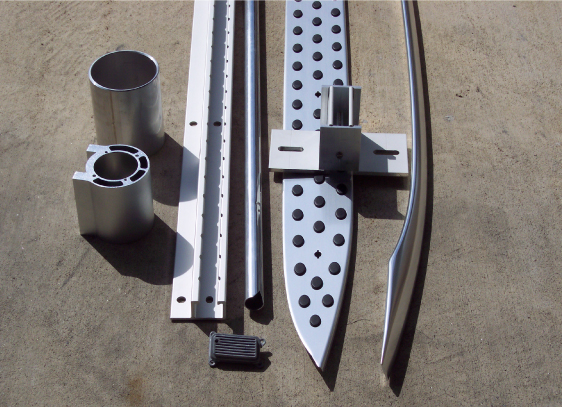O-Flex Automotive 615-898-1910 | O-Flex Metal Finishing 205-755-3084
O-Flex Automotive 615-898-1910 | O-Flex Metal Finishing 205-755-3084
From the start of the anodizing process, to the minute your product arrives at your facility, the O-Flex team strives to ensure that your project is completed in a timely manner and to the highest standard of quality. Regardless of your anodizing needs, you can feel completely confident in our services.
We offer the following anodizing services in our fully automated anodizing system finishing facility:
Anodizing is an electrochemical process that converts the metal surface into a durable, corrosion-resistant, anodic oxide finish. Aluminum is ideally suited to anodizing, although other nonferrous metals, such as magnesium and titanium, also can de anodized.
The anodic oxide structure originates from the aluminum substrate and is composed entirely of aluminum oxide. This aluminum oxide is not applied to the surface like paint or plating, but is fully integrated with the underlying aluminum substrate, so it cannot chip or peel. It has a highly ordered, porous structure that allows for secondary processes such as coloring and sealing.
Anodizing is accomplished by immersing the aluminum into an acid electrolyte bath and passing an electric current through the medium. A cathode is mounted to the inside of the anodizing tank; the aluminum acts as an anode, so that oxygen ions are released from the electrolyte to combine with the aluminum atoms at the surface of the part being anodized. Anodizing is, therefore, a matter of highly controlled oxidation — the enhancement of a naturally occurring phenomenon.


Exposed to the earth’s atmosphere, aluminum combines with oxygen to form a protective surface film, which inhibits further oxidation of the aluminum. Unlike steel or iron alloys, aluminum will not continue to oxide (rust) once this protective layer is formed. This natural oxide is extremely thin and loosely adhered to the aluminum surface, however, and is easily removed by handling. Anodizing is a process which thickens the natural oxide film resulting in a heavy aluminum oxide film of controlled thickness having the hardness similar to that of a ruby or sapphire.
When aluminum is anodized conventionally, direct electrical current (DC) is passed through a bath of sulfuric acid – the electrolyte – while the aluminum being treated serves as the anode. This produces a clear film of aluminum oxide on the aluminum’s surface. Electron microscopy indicates that this layer is mostly porous with a very thin barrier layer at the base. This structure lends itself very well to electrolytic coloring or absorptive dying.
During the anodizing process, several controls are critical to assure the specified film thickness, it’s abrasion resistance and density. These controls include a precise combination of chemical concentration, temperature and current density. In the production of quality anodized products, there is no alternative to having sophisticated monitoring equipment and highly-trained, experienced personnel. The company you choose for your anodizing projects must be able to demonstrate these qualities.